
In 2024, as users dedicate an average of 5 hours a day to their mobile devices (State of Mobile, data.ai), m-commerce stands at the forefront of retail success. Personalized experiences, optimized interfaces, and seamless checkouts offered by mobile apps effectively bridge the gap between in-person and at-home shopping. This revolution isn't just a passing trend; it's a transformative force redefining how businesses connect with buyers.
For retailers, adopting m-commerce isn’t just a strategic choice; it's a necessity. It's a crucial step to prevent them from falling behind and, more importantly, to enhance customer experiences, expand user bases, boost sales, and encourage repeat purchases.
What is m-commerce and what sets mobile apps apart as the most effective when it comes to turning interactions into transactions?
In 1997, Kevin Duffey coined the term mobile commerce, also known as m-commerce, defining it as “the delivery of electronic commerce capabilities directly into the consumer’s hand, anywhere, via wireless technology.”
So in a nutshell, m-commerce involves the buying or selling of goods and services through mobile devices such as smartphones and tablets.
According to a recent report from Gemius, Polish consumers are increasingly leaning towards e-commerce. The trend is fueled by the ease of 24/7 shopping, the comfort of buying from home, and the cost savings resulting from lower online prices.
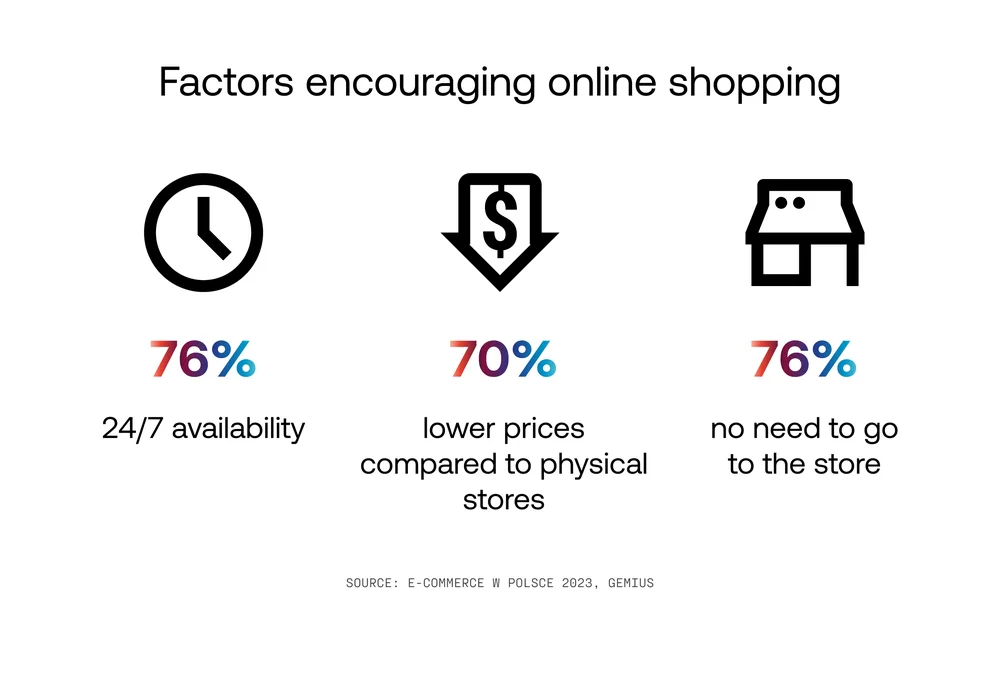
M-commerce plays a pivotal role in today's e-commerce landscape due to the surging popularity of mobile devices, especially among digital natives.
When shopping online, 79% of Polish users opt for smartphones (the number reaches 93% in the youngest group), 69% complete transactions on laptops, and only 38% turn to desktop computers. This ongoing shift highlights the need for businesses to step up their game, focusing on providing mobile commerce experiences that are both user-friendly and efficient.
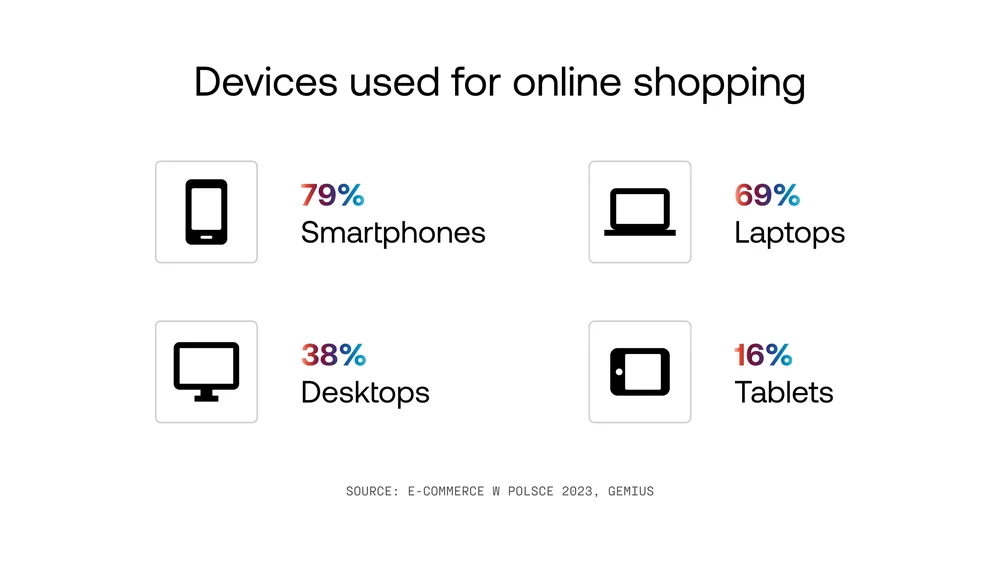
The above statistics may fill retailers with optimism, but there's also a fly in the ointment. Based on findings from our Młodzi vs Mobile report, 52% of young consumers (aged 15-20) express frustration when buying through mobile apps. They point out issues related to usability, including technical glitches (52%), unclear information presentation (30%), and a lack of intuitive navigation (26%). Customers are also bothered by hidden fees (28%) and intrusive promotions (40% among those aged 21-30).
Additionally, 20% of respondents aged 15-20 have over 10 unused apps on their phones. This is because over half of them use apps solely for immediate needs. Consequently, digital products that fail to provide ongoing value and were installed to obtain one-time discounts quickly become forgotten.
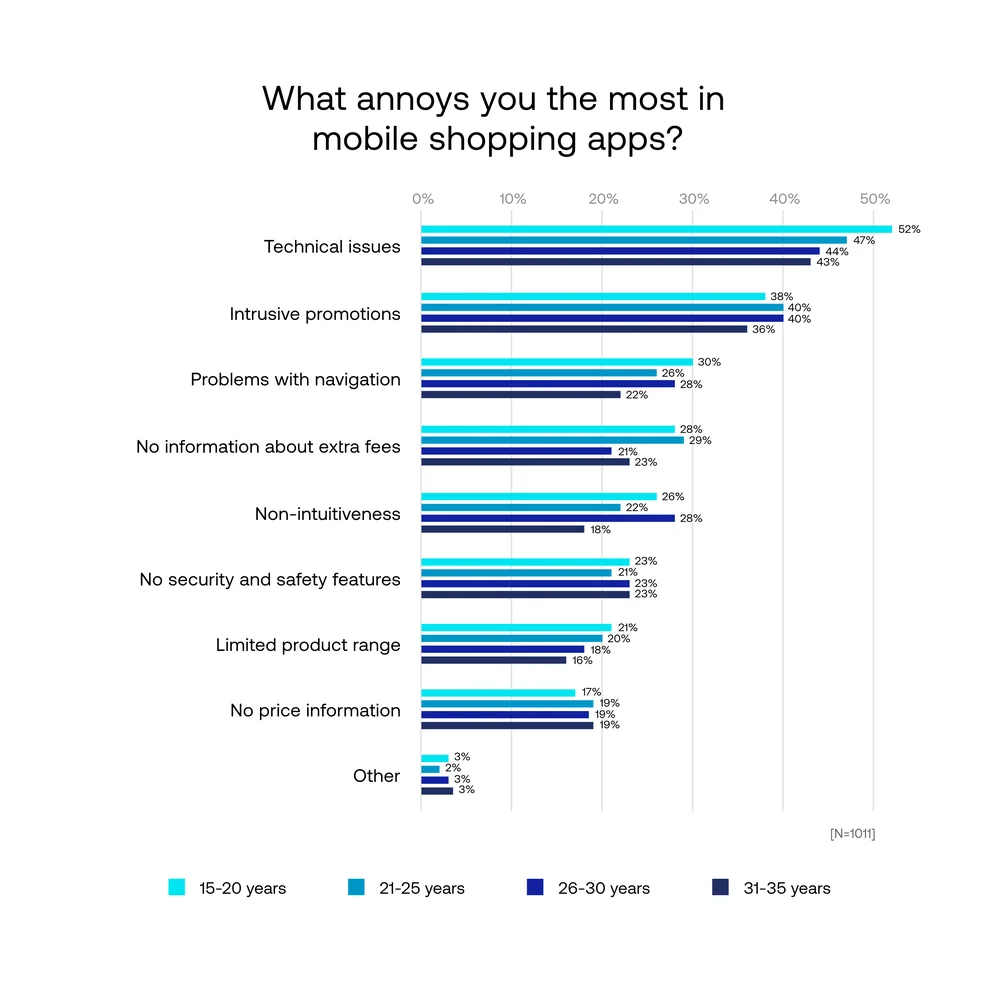
As indicated by the report from AppsFlyer, 49% of apps are uninstalled within a month of download, and 49% of these uninstallations occur during the first 24 hours. As the saying goes, prevention is better than cure. But to prevent customers from leaving your app, it's crucial to identify the reasons why they typically abandon digital products in the first place.
Do you know that familiar frustration when online shoppers load up their carts but don't seal the deal? High shopping cart abandonment gives many retailers sleepless nights. This metric helps businesses gauge the extent of the shopping cart abandonment problem and is calculated by dividing the number of completed transactions by the total number of transactions and multiplying it by 100.
Currently, the average shopping cart abandonment remains around 70% (Baymard Institute). While there are cases that can’t be avoided, e.g., price comparison, window shopping, or research, offering a smooth and personalized shopping experience that makes the journey from product selection to checkout a breeze definitely helps.
The extensive checkout usability testing by Baymard Institute suggests that an ideal checkout flow should have a maximum of 12-14 form elements. However, benchmarking reveals that the average flow includes 23.48 form elements in the default configuration.
The more time-consuming the checkout process, the higher interaction costs and likelihood that the store will be perceived as unfriendly. At the other end of the spectrum, better checkout design can boost conversion even up to 35%.
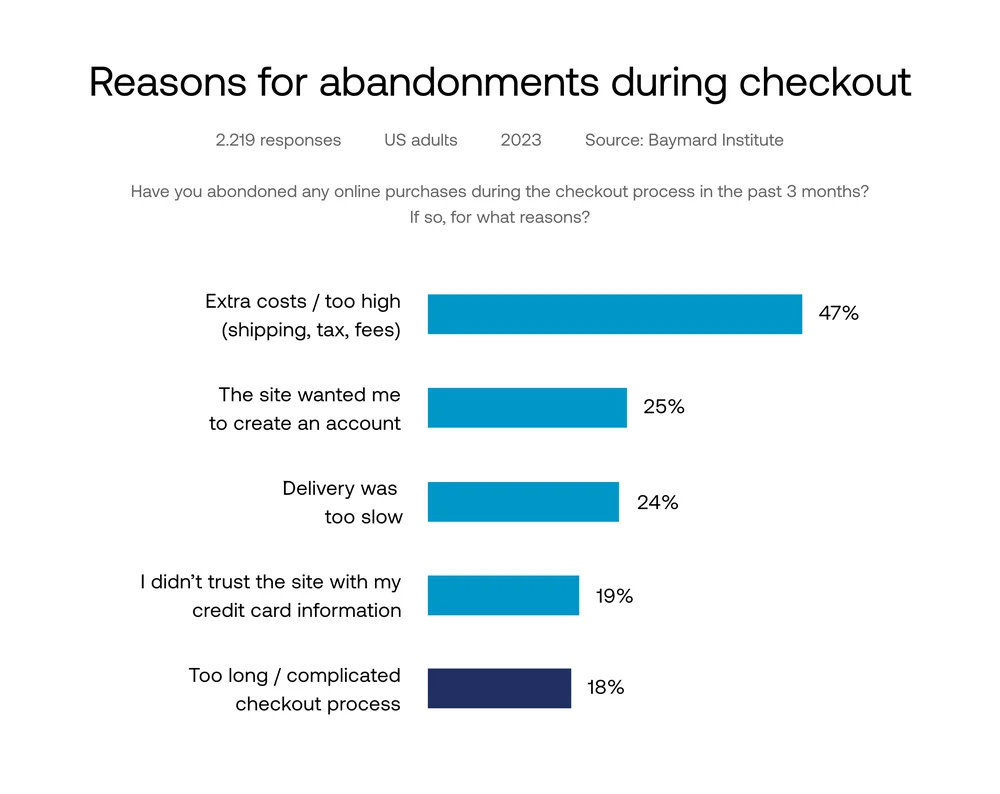
What’s more, based on the report on shopping cart abandonment by Izba Gospodarki Elektronicznej, we can observe that:
Smartphones are integral to our daily routines, serving as inseparable companions in various activities, from checking messages to staying updated on news or handling bill payments. Our Młodzi vs Mobile report reveals that 1 in 10 young Poles (15-20 years old) could only function without a phone for a maximum of 1 hour. This constant connectivity establishes the groundwork for seamless and immediate interactions, making mobile apps the natural channel for efficient and convenient shopping experiences.
CNBC estimates that 72.6% of internet users will exclusively access websites through mobile devices by 2025, while Statista predicts that mobile commerce will constitute over 10% of all US retail sales by 2025 – an impressive 7% increase since 2018.
Mobile devices not only amplify online sales and transactions but also enrich brick-and-mortar experiences. 78% of young Polish buyers use their smartphones in physical stores to explore products, read reviews, and check stock availability. This shows that mobile devices seamlessly intertwine phygital experiences, bridging the gap between online and offline words.

In addition to reshaping the shopping experience for greater convenience, accessibility, and efficiency, mobile apps bring several other key advantages compared to their website counterparts and desktops. The list includes:
With advantages ranging from enhanced customer experiences to diversified payment methods, mobile apps stand at the forefront of transforming interactions into transactions, shaping the future of m-commerce.
But as the saying goes, actions speak louder than words…
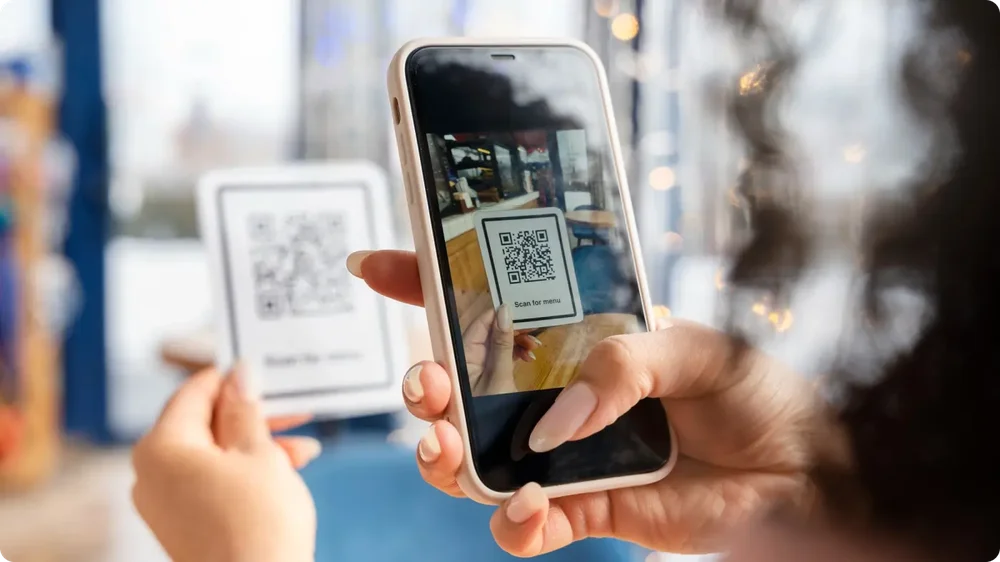
In partnership with Super-Pharm, a leader in health and beauty, our strategic mission was clear – to seamlessly integrate their traditional loyalty program into the dynamic world of e-commerce.
This journey began with the development of a functional design system, placing equal emphasis on visual appeal and financial efficiency. Building upon this foundation, we propelled the launch of the Super-Pharm app, strategically combining online sales, loyalty perks, and in-store features. The overarching goal was to simplify the shopping experience, providing customers with a cohesive journey across various touchpoints.
Knowing the importance of in-app engagement and loyalty, we also introduced Klub Super-Pharm, a data-driven loyalty program allowing users to accrue points, access app-only coupons, and unlock tailored discounts. Additionally, users have the flexibility to leverage earned points for rewards or charitable contributions.
And the results speak for themselves – 1.5 years after the launch, more than 30% of e-commerce customers make purchases through the app, and the monthly user base is nearly 400 000. Is there a more convincing proof of the effectiveness of mobile applications in shaping modern consumer experiences?
To learn more about our cooperation with Super-Pharm, explore our case study.
The power of mobile apps doesn't just lie in their convenience and accessibility; more importantly, it resides in their potential to build customer loyalty and convert occasional shoppers into devoted customers.
Businesses that offer a personalized, seamless shopping journey and embrace well-designed apps that incentivize customers not only keep up with the digital era but also experience increased buyer satisfaction, app stickiness, engagement, and revenue.
Your customers are already immersed in the mobile experience – the question is, are you?